Biology

Jul 11th, 2025 - In the arid, fossil-rich landscape of Arizona's Petrified Forest National Park, a team of paleontologists stumbled across something unexpected. The experts found the fossilized jawbone of a pterosaur that may be the oldest ever found in North America. The discovery came from a remote site that revealed not just one remarkable creature, but a whole ecosystem preserved in stone. The study was led by scientists from the Smithsonian's National Museum of Natural History and Petrified Forest National ... [Read More]
Source: earth.com

Jul 11th, 2025 - The Denver Museum of Nature and Science has sent researchers everywhere from North Dakota to Antarctica in search of fossils to study and display. It turns out they could have stayed home. The museum discovered fossilized dinosaur bones in its parking lot in January while drilling test holes for a geothermal energy project, it announced Tuesday. Knowing they would be burrowing almost 1,000 feet deep into ancient rock that dated back over 65 million years to the Late Cretaceous period, the ... [Read More]
Source: washingtonpost.com

Jul 11th, 2025 - Plants do not wave warning flags when a hungry caterpillar shows up. Yet for years scientists wondered if roots guide underground networks that let one plant alert its neighbors before the first bite lands. A modeling study released in January, 2025 suggests the picture is far less neighborly. Lead author Dr Thomas Scott of the University of Oxford argues that most plants would lose more than they gain by sounding a genuine alarm. Why plants play tricks Natural selection rewards thrift, so ... [Read More]
Source: earth.com

Jul 11th, 2025 - For centuries, turtles have fascinated people with their remarkably long lifespans. A new study reveals something even more extraordinary. Cancer is extremely rare in turtles, which makes them a promising model for cancer research. The study, led by Dr. Ylenia Chiari at the University of Nottingham , shows that cancer affects only about 1% of turtles. This rate is much lower than in mammals or birds. The team analyzed decades of health records from zoos across Europe and the United States, ... [Read More]
Source: earth.com
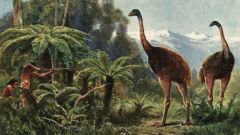
Jul 10th, 2025 - A giant, flightless bird that roamed New Zealand before going extinct about 600 years ago is the next species on a controversial list of "de-extinction" targets from the biotechnology company Colossal Biosciences. Colossal announced on Tuesday (July 8) that its scientists and local Indigenous partners will "bring back" the South Island giant moa ( Dinornis robustus ) through genetic engineering within the next 10 years. D. robustus stood up to 12 feet (3.6 meters) tall and was the largest of ... [Read More]
Source: livescience.com
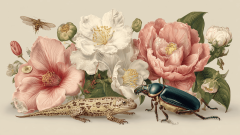
Jul 10th, 2025 - A pollinator story featuring sex, deceit, and tequila. When you picture a flower and a pollinator, the odds are you're imagining a colorful, perfumed flower, and a honeybee. Perhaps, if you're feeling adventurous, a butterfly or a hummingbird. That's a good guess, because bees are the most common pollinators. But nature rarely sticks to the script, and exceptions are a-plenty. In unusual examples of evolution, flowers are placing their bets on much stranger partners: beetles that existed before ... [Read More]
Source: zmescience.com

Jul 10th, 2025 - Bees have long been admired for their delicate beauty and essential role in pollination. These small creatures, however, face growing challenges from their environment. Rising temperatures and pollution continue to reshape bee behavior in unexpected ways. Recent research is unveiling surprising links between environmental changes and the subtle buzzes bees produce. These quiet vibrations are more than just background noise. They hold deep meaning for the survival of bees and the ecosystems they ... [Read More]
Source: earth.com

Jul 10th, 2025 - By & Researchers have described proteins that they say are among the most ancient ever sequenced. Two teams, which analysed molecules from extinct relatives of rhinos and other large mammals, have pushed back the genetic fossil record to more than 20 million years ago. The studies — out in Nature today — suggest that proteins survive better than researchers thought. This raises the possibility of gleaning molecular insights about evolutionary relationships, biological sex and diet ... [Read More]
Source: scientificamerican.com
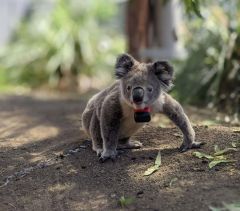
Jul 9th, 2025 - Koalas spend 99% of their lives in trees but the other 1% is deadly. For most of the day and night, koalas barely move. They nap curled into tree forks, or chew carefree on eucalyptus leaves. But for a few fleeting minutes, usually just 10 out of 1,440, they come down to the ground. And that's when they're most likely to die. New research reveals that these brief terrestrial forays account for two-thirds of all recorded koala deaths, mostly from dog attacks and car strikes. The findings offer ... [Read More]
Source: zmescience.com
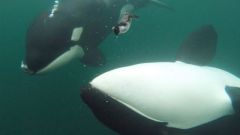
Jul 9th, 2025 - When researcher Jared Towers set up his cameras underwater to observe a pair of killer whales , he saw something strange. One of the orcas , a juvenile female, "approached a camera I had in the water to film her younger brother and then opened her mouth and let out a dead seabird," Towers, the executive director of Bay Cetology, a Canadian team of marine biologists based in Alert Bay, British Columbia, told CNN. She closed her mouth, paused, apparently watching for Towers' reaction and hung in ... [Read More]
Source: cnn.com
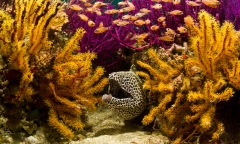
Jul 8th, 2025 - Nautilus Members enjoy an ad-free experience. . Nautilus Members enjoy an ad-free experience. I used to look at coral fossils and think, how great things must have been for these creatures back before humans began stirring up trouble for the planet, like extreme heat and pollution. But as I looked back into deep time, I realized that they had faced down formidable challenges before. The Ice Age was one such challenge. For the past 800,000 years, glacial-interglacial cycles have flip-flopped ... [Read More]
Source: nautil.us
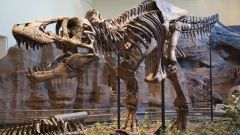
Jul 8th, 2025 - Scotty is considered the heaviest and one of the longest-lived T. rex specimens ever discovered. What mysteries can it reveal? A University of Regina research team made some key discoveries about how dinosaurs may have healed from injuries when they examined the preserved blood vessel structures inside a rib bone from Scotty , a famous Tyrannosaurus rex (Cretaceous period) unearthed in Saskatchewan in the 1990s. Scotty is considered the heaviest and one of the longest-lived T. rex specimens ... [Read More]
Source: digitaljournal.com

Jul 8th, 2025 - Margaret Bowles and Maddie Cronin were paddleboarding off Stony Beach in Woods Hole on July 4 when a peaceful evening took a terrifying turn. As Cronin, 18, snapped photos of Bowles, 19, around 7:30 p.m., a great white shark moved through the water nearby, its dorsal fin slicing through the surface. Cronin, a rising sophomore at the University of Toronto, didn't see the shark at first, but watched as the expression on her friend's face quickly changed from a relaxed smile to a look of sheer ... [Read More]
Source: bostonglobe.com
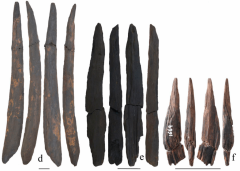
Jul 7th, 2025 - The find may require rethinking the so-called "Bamboo Hypothesis." Someone made very sophisticated wooden tools in China 300,000 years ago, and it might have been Denisovans or even Homo erectus . The digging sticks, curved root-slicers, and a handful of somewhat puzzling implements were all found at a lakeshore site called Gantangqing. They are the oldest wooden tools from East Asia so far. All the previous Pleistocene tools found in the area were made from harder material like stone, bone, or ... [Read More]
Source: arstechnica.com
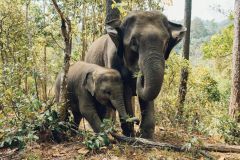
Jul 7th, 2025 - In a study in the Journal of Animal Ecology , researchers from Xishuangbanna Tropical Botanical Garden of the Chinese Academy of Sciences showed that the presence of critically endangered Asian elephants (Elephas maximus) is associated with significantly more robust and abundant mammal communities in tropical forests. Researchers analyzed camera trap data collected from 2017 to 2021 across tropical forests in Yunnan Province, China. The data included 9,822 independent wildlife events with Asian ... [Read More]
Source: phys.org
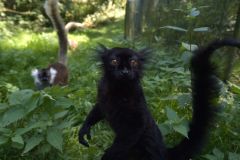
Jul 7th, 2025 - New research on Monday contradicted the commonly held idea that males dominate females among primates, revealing far more nuanced power dynamics in the relationships of our close relatives. "For a long time we have had a completely binary view of this issue: we thought that a species was either dominated by males or females — and that this was a fixed trait," Elise Huchard, a primatologist at the University of Montpellier in France, told AFP. "Recently, this idea has been challenged ... [Read More]
Source: digitaljournal.com